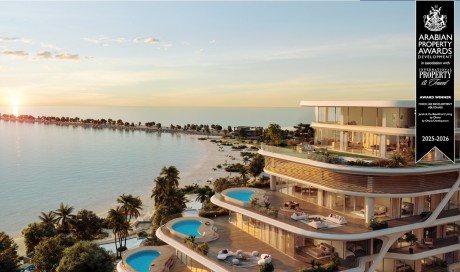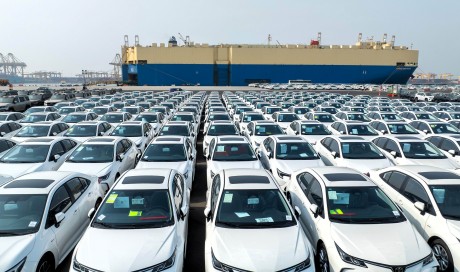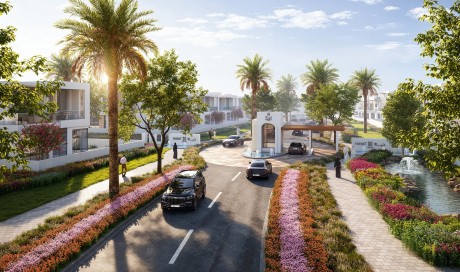It was not, as one recently constructed crossing was once called, “a bridge to nowhere” but rather the bridge to everywhere. When the Maqta Bridge opened fifty years ago it was a symbol of Abu Dhabi's desire to connect to the rest of the world.
The date was August 6, 1968, when the black Mercedes 600 limousine carrying Sheikh Zayed swept past rows of fluttering red and white flags and saluting soldiers to become the first car to officially cross the bridge.
It was a 16 kilometre journey from what was then the heart of the city to the newly tarmacked road leading up to the crossing.
On the way, Sheikh Zayed passed another sign of the changing times; the new Al Bateen international airport, also soon to open, with a runway long enough for the largest of passenger jets.
Today, very little archive material is thought to have survived the bridge's brief opening ceremony. But a single black and white image depicting Sheikh Zayed preparing to pray on its apex is almost certainly taken on that same day.

Back then the bridge was just a single elegant arch on a crossing stretching just 300 metres. Its construction was to transformed a journey that once took many hours.
The waterway that separated Abu Dhabi from the mainland made the island a natural fortress. If Qasr Al Hosn protected the town from the sea, the narrow strait of water between the mainland guarded the back door.
Frustratingly, the short stretch of sea could only be crossed safely in one place, and only then at low tide. They called it what it was, Al Maqta – The Crossing. To defend this single vulnerability in their defences, a fortified tower was built on an outcrop of rock in the centre of the passage.
The Maqta Tower guarded the crossing for two centuries. It watched the camel trains splashing by in the heat of summer for the cool of Al Ain and saw them return with precious cargoes of firewood for an island where trees did not grow. Al Maqta was part of the rhythm of life.
A description of the route to Al Ain written by British officials in 1912, noted: “A tidal creek, running in from the sea, and referred to by the name Al Maqta. The custodian of the Sheikh of Abu Dhabi directs passengers when and where to cross.”
Oil, or the search for it, brought the first change. The exploration deadlines could not wait for the shifting tides when it was safe for a vehicle to cross. In 1949 a causeway was built out of rough blocks of stone and cement. It was narrow and uneven, but passable at all hours. Al Maqta had been tamed.
It took ten years to find the oil, but when confirmed, Abu Dhabi changed again. The scent of money lured the 20th Century like a hungry animal. Banks, telephones, electricity, schools all arrived, even a post office and a hotel. More people and more cars. Every day, more cars.

Soon after it became the causeway that proved the problem. David Riley, who was working for an Abu Dhabi bank in the early 1960s, remembers that during very high tides and winter storms, the land around the cause would flood.
“This made the journey to the causeway horrendous and it was not unusual to see many vehicles abandoned, all stuck in the mud,” he said.
The future was highways and airports. It was cars, not camels that made the journey to Al Ain. There was business in Dubai and connections to be made. Something needed to be done. Abu Dhabi needed a bridge. Al Maqta was the place to build one.
A contract was signed on December 2, 1965 between Cansult, the Canadian project managers, and the then Ruler of Abu Dhabi, Sheikh Shakhbut bin Sultan.
The single page agreement was for both the new airport and “the construction of a bridge over the creek between Abu Dhabi Island and the mainland”.
...[ Continue to next page ]
Share This Post















